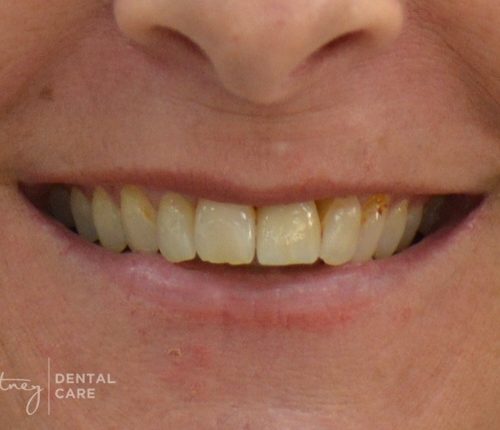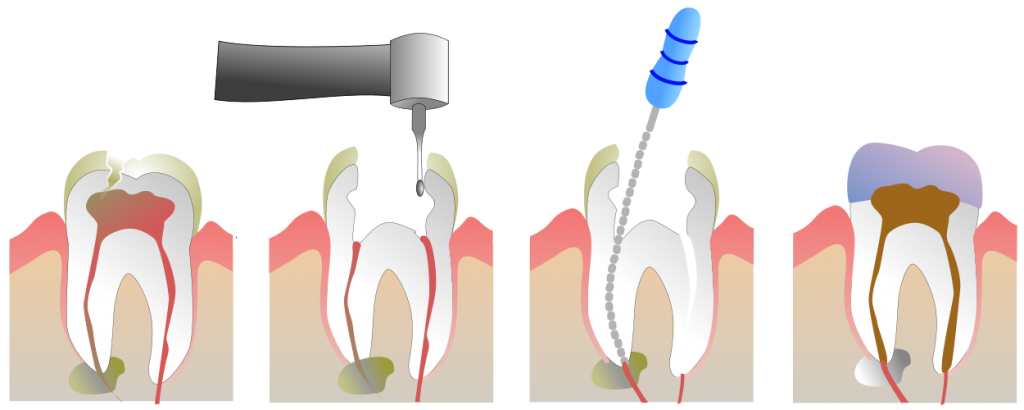Root Canal Treatment Guide
Root canal treatment (or endodontic treatment) is a method to save a tooth from being extracted despite being badly damaged due to decay, disease or injury. Most people like to save their tooth if possible as natural teeth generally function better than artificial ones. Cleaning and maintenance of natural teeth is also much easier.
Root canal treatment is successful in most cases, and with proper care and maintenance, it can last for a long time. All general dental practitioners are trained to perform root canal treatment. Some patients may be referred to a specialist dentist (endodontist) who has undertaken special training and qualifications in root canal therapy.
A tooth requires root canal treatment if there has been infection or inflammation of the pulp. Symptoms include pain, sensitivity to hot or cold, sleep disturbance, tooth discolouration, or soreness in the gums around the tooth. If not treated in a timely manner, severe pain and infections at the end of the roots (abscesses) can occur. In such cases, if endodontic treatment isn’t an option, then the tooth will have to be removed.
The purpose of root canal treatment is to remove the nerve of the tooth and clean out the inside of the tooth.
Your dentist or endodontist will examine the tooth and take a radiograph (X-ray film). They usually numb up the tooth and use a sheet of latex, called a rubber dam, to isolate the tooth and keep it clean and dry during treatment. They create an opening in the tooth to reach the pulp. Using special instruments called files, your dentist or endodontist will remove the inflamed/infected pulp. Each root canal is then cleaned, enlarged and shaped, to try and reduce the likelihood of residual harmful bacteria in the tooth. Anti-inflammatory and antibacterial medicines may be placed in the tooth to help stop the inflammation and infection processes. Your dentist or endodontist may take several radiographs to check the shape and length of the root canals and the progress of the treatment.
It may take several visits to the dentist or endodontist to complete root canal therapy. There may also be some pain and discomfort following appointments, but these usually last no longer than a few days at the most. Taking standard pain relief medication such as ibuprofen or paracetamol may be helpful in such circumstances.
To protect the inside of the tooth and prevent further infection, the root canals are filled and the pulp chamber is sealed. It is very important to discuss with your dentist what restoration is planned after root canal treatment. Sometimes, if there is very little tooth structure left, a post may be inserted inside the tooth when the root canals are being filled to help support an artificial crown.
As the bone surrounding the treated tooth takes time to heal completely, follow-up visits may be required to confirm satisfactory healing. This is usually done through examining the tooth and gums and taking a radiograph. To assist the healing process, it is important to practice good oral hygiene – brushing, flossing and regular dental check ups.
It is important to note some possible complications of root canal treatment:
- While it is a highly successful treatment option, sometimes root canal therapy does fail. This may necessitate re-treatment of the tooth, or removal of the tooth.
- The special instruments (files) used are thin, flexible metal. Sometimes they do break and fracture. Special procedures may be required to remove the broken fragment. In some situations, it may not be possible to do so, and the long-term effects depend on many factors. Your dentist will discuss this with you in detail if a file fracture occurs.
- In some cases, the tissue surrounding the infected tooth may not heal well following treatment. Reasons for this are varied, including resistant bacteria, cysts, or reaction to materials. Re-treatment may be needed, or a procedure termed apicoectomy may be advised. Apicoectomy is a minor surgical procedure where the tissue at the base of the tooth is removed.
Costs for root canal therapy varies as some teeth are more complex than others in terms of anatomy and number of canals in the tooth. Ask your dentist for an estimate of all costs.
5 Ways To Beat Dentist-Related Anxiety Australian Dental Statistics (Updated 2020)Latest from the Dental Blog
 14 Feb 2018
14 Feb 2018
What are the Causes and Treatment for Bad Breath?
Imagine being on a date with the love of your life in a fancy restaurant. The food is great. The…
 24 May 2022
24 May 2022
Tartar vs Plaque: What’s the Difference?
Plaque is the thin film that accumulates on your teeth every day after eating and drinking. If plaque is not…
 10 Nov 2017
10 Nov 2017
Impacts of Stress on your Dental Health
With the end of the year fast approaching, a busy and stressful time can be expected for some people. An…

